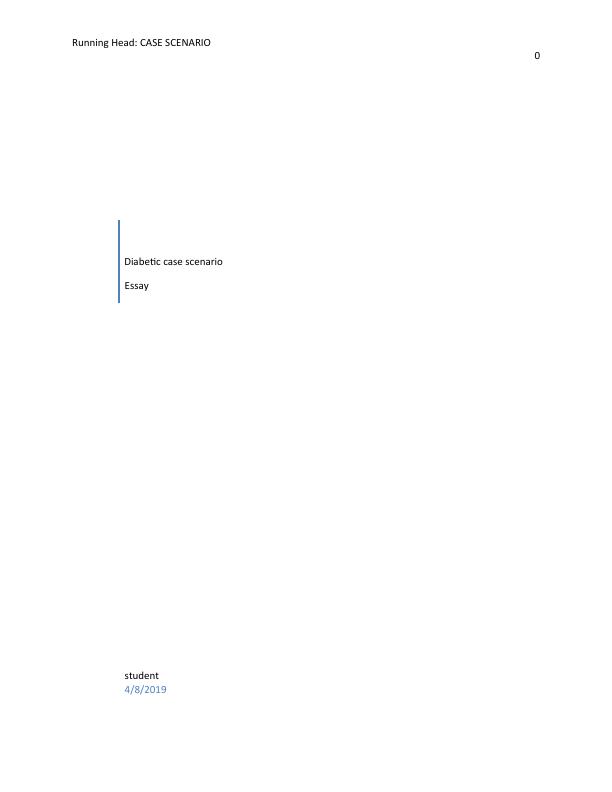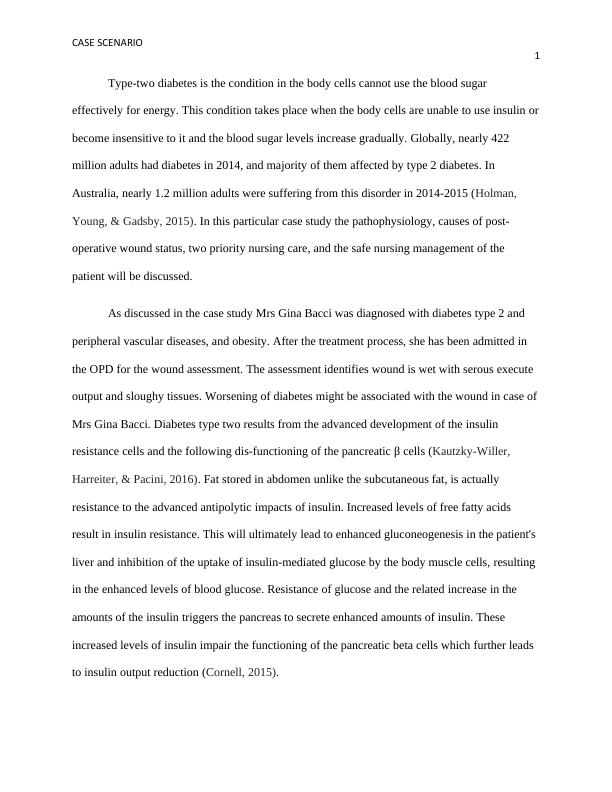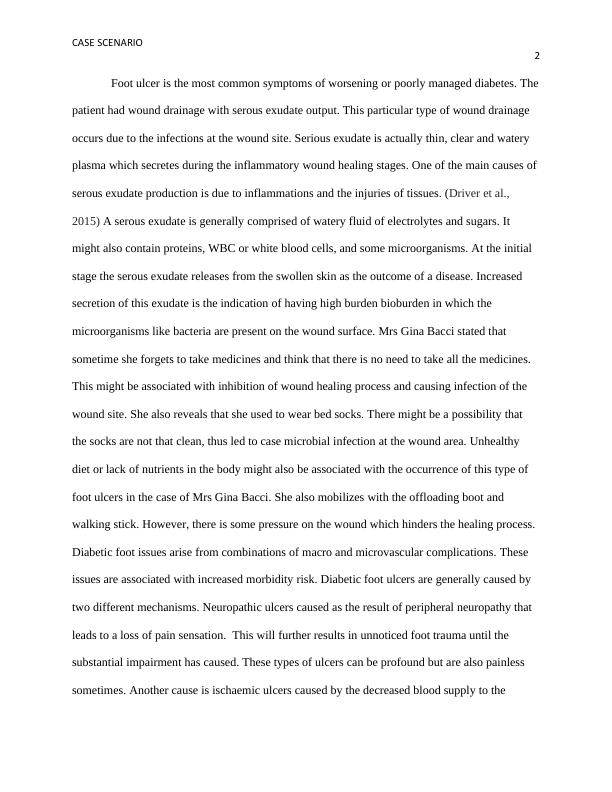Diabetic Case Scenario: Pathophysiology, Causes, and Nursing Management
9 Pages2775 Words91 Views
Added on 2023-01-17
About This Document
This case scenario discusses the pathophysiology, causes, and nursing management of a diabetic patient with peripheral vascular diseases and obesity. It focuses on foot ulcers, wound assessment, and medication management. The patient's wound is wet with serous exudate output and sloughy tissues. The priority areas of care are the infected wound and the patient's poorly managed medication. Nurses play a key role in providing high-quality care by conducting routine assessments, educating the patient about medication importance, and addressing hygiene and wound healing.
Diabetic Case Scenario: Pathophysiology, Causes, and Nursing Management
Added on 2023-01-17
ShareRelated Documents
End of preview
Want to access all the pages? Upload your documents or become a member.
Critical Analysis of Case Study
|10
|3115
|37
BACHELOR NURSING ASSIGNMENT.
|10
|2646
|43
Nursing Assignment-Diabetic Case Study
|10
|2911
|36
Nursing Priorities of Care for Post-Operative Wound Infection: A Case Study of Mrs. Gina Bacci
|10
|2535
|397
Identifying Priorities of Nursing Case
|9
|2718
|50
Diabetes Management Case Study
|10
|3057
|65



